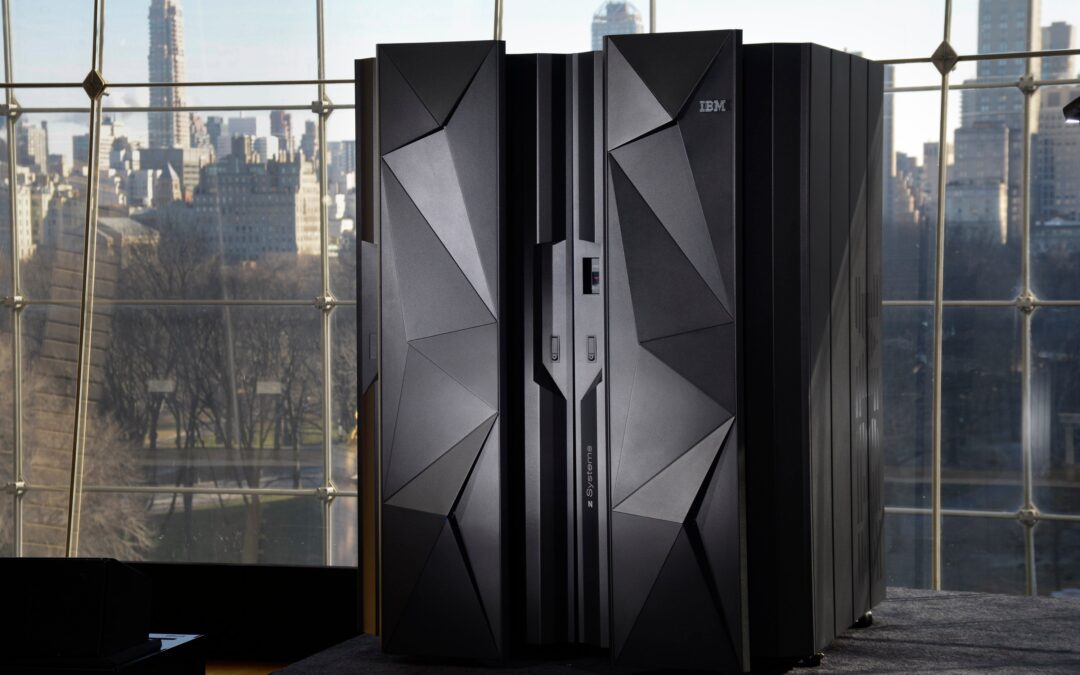Long live the mainframe!
For years, experts in computing markets have predicted the inevitable replacement of the mainframe. Many pundits saw the mainframe as soon-to-be outdated due to the growth of cloud computing and affordable x86 commodity servers.
The fact of the matter is that in 2021, the mainframe continues to be relevant for many enterprises and industries globally.
Here are eight major industries where mainframes are still king:
- Banking
- Insurance
- Healthcare
- Government
- Machine Learning
- Aviation
- Blockchain
- Retail
8 Industries Where Mainframes Are Still King
IBM’s z15, a machine the size of a refrigerator, can process over 2.5 billion transactions daily. With its only competition being the x86 commodity servers, the mainframe’s processing power leaves alternatives in the dust.
Due to their speed, processing capabilities, and security, mainframes are still king in at least eight industries, and their use cases grow in sectors like DevOps, cloud computing, and blockchain.
Mainframes continue to shine at traditional tasks, and 67 Fortune 100 enterprises use mainframes for their crucial business functions.
1) Banking
The banking, financial services, and insurance (BFSI) segment have been and will continue to be, reigning leaders in mainframe usage until 2025.
Banks require enormous processing power for handling massive amounts of transaction data, high-frequency trading, overnight mainframe batch runs for customer statements, internal financial reports, and more. Mainframes handle data processing on a scale unparalleled by commodity servers.
Accordingly, 44 of the top 50 banks use IBM’s z model, and investment banks and retail banking also utilize the mainframe for revolving credit card transactions, ATM withdrawals, and online account updates.
2) Insurance
“Big iron” is not going away any time soon, and the market is expected to reach $2.90 billion by the year 2025.
And insurance companies are major contributors to that market. All top 10 global insurers reportedly use IBM z’s, which is probably due to the large amounts of data that insurance companies must manage. Insurance data is necessary for risk assessments, pricing, and investments in markets, so tapping into that data quickly is extremely important.
3) Healthcare
Mainframes have long excelled at high-speed processing capabilities. Beating out even contemporary alternatives, mainframes can also handle multiple terabytes of data with no problem. This makes them a significant part of healthcare data processing.
The mainframe is also incredibly secure, high-volume, compliant, and can handle the sensitive data storage needs of healthcare. The truth is mainframes are great for all information-intensive industries, including healthcare and BFSI.
4) Government
From the National Weather Service to the IRS, government agencies in North America and abroad rely on mainframes to store large amounts of data, analyze the data, and keep it secure.
Even as new IT applications and technologies emerge, the mainframe continues to stay relevant, especially in industries that require non-cloud connected strongholds.
5) Machine Learning
Mainframes once used the operating system and language known as COBOL. Now, they are multilingual and capable of running Linux OS with modern programming languages (i.e., Python, Java, JavaScript, and C++). However, in all likelihood, governmental agencies and educational institutions still use COBOL systems, making them weak to data breaches and limitations.
Luckily, the mainframe can integrate sophisticated tools initially developed for the x86 server. This means it can tap into AI tools and use open source languages and languages such as Scala, TensorFlow, and Python.
Therefore, the mainframe is a competent machine learning host. No longer do enterprises need to off-load mainframe data to a cloud or x86 server environment, and, instead, big data analytics can be done on the mainframe itself.
6) Aviation
With ever-changing flight details and complex, overlapping networks, it’s no surprise that the aviation industry uses the mainframe to help ensure that planes arrive when they are supposed to.
Even the government regulators that oversee airlines, as well as airline manufacturers, utilize the mainframe to manage aviation regulation and organization.
7) Blockchain
Mainframes’ advantage over x86 regarding response time, scalability, security, and transaction throughput makes it an ideal and enticing candidate for blockchain hosting.
New blockchain technologies like Ouroboros and blockchain networking require processing power to allow transactions to be completed simultaneously. And, it’s no question that blockchain requires advanced security.
Luckily, mainframes can maintain extremely high performance while providing 100% end-to-end encryption and protection. The newest models can encrypt data 18x faster and at 5% the cost of x86 platforms.
8) Retail
The overwhelming majority of US retailers (23 of the 25) continue to rely on mainframes to help process transactions and keep track of inventories. Retailer customer interactions, such as credit card and ATM transactions, are carried out through high volume, real-time, online transaction processing (OLTP)
Both online and brick-and-mortar stores can benefit from the ability of modern mainframe systems for enormous transaction volumes.
Keeping Your Mainframe Running
Some think that the mainframe is dead, but the reality is that its worldwide market value was 4877.7 million USD in 2020 and is expected to reach 5865.8 million USD by the end of 2026.
If you work in an industry that relies on its mainframe functionality, you know how important on-site maintenance, replacement parts, and updated software are. Going through IBM for these needs can be extremely costly. Luckily, you can get plug compatible peripherals (VTL, DASD, Console consolidation and automation) through third-party vendors like Visara.
Trust Visara to keep your mainframe running, even in the most critical of times.
A guide for your journey. Most senior leaders in the enterprise are looking for rock-solid performance, while mitigating risk for their enterprise-class systems. They struggle with end-of-life on their IBM mainframe peripherals with a looming end-of-lease deadline.
At Visara, we’ve been there, and have seen these challenges for over 40 years. We’ve serviced organizations from the Fortune 100 on down.
We have a simple 3-step “ABC” approach, to Assess the upcoming mainframe related problem, Build a future-proof solution to maintain IBM at the core, and Control the cost for a same-or-better implementation.
Simple, cost-effective mainframe peripheral solutions.


Recent Comments